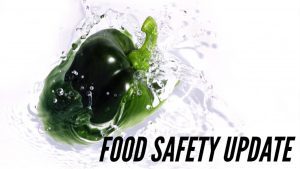A pivotal part of any food safety plan is documentation and being able to produce the right kind of “paper trail” —preferably in electronic form—is crucial.

Vicky Gilbert, vice president of food safety at Nickey Gregory Company, LLC in Forest Park, GA tracks documentation on more than 400 produce items daily. Gilbert relies on software from Produce Pro to help ensure each provider is current on audits and other food safety requirements.
“We scan third-party audits, certificates of insurance, and letters of guarantee,” she explains.
The software not only sends alerts to vendors 30 days before any documents will expire, but notifies Gilbert of any actual expired documentation and locks out brokers who have not updated their information. “It helps us stay in control of our food supplier program,” Gilbert said.
Cameras have also been installed at all Nickey Gregory facilities. “I can watch processing, repacking, the loading docks, and trucks,” Gilbert said, while also ensuring workers are following procedures.
When it comes to traceability, more is better than less. More information, available more quickly, will go a long way if there’s an outbreak or recall. Nickey Gregory’s traceback system can tell how many times a tomato has been repacked, back to the original lot.
Nevertheless, there are still limitations.
“An operating system is only as good as the information you put into it,” Gilbert said.
And because preparedness involves more than machine intelligence, the company stages mock recalls twice a year.
“I can usually trace back a lot in 10 to 15 minutes and tell you who we sold the product to,” she said.
Traceability is also top of mind for Joel Miedema, secretary and treasurer of E. Miedema & Sons, Inc., a fourth-generation, family-owned farm in Byron Center, MI, who is looking to revamp his traceability system using barcodes, mobile scanners, and printers. The cost, however, may make some solutions out of reach.
“There are some large, all-in-one options out there, but the cost keeps them from being a realistic option for us,” he said.
This is an excerpt from the most recent Produce Blueprints quarterly journal. Click here to read the full article.
A pivotal part of any food safety plan is documentation and being able to produce the right kind of “paper trail” —preferably in electronic form—is crucial.

Vicky Gilbert, vice president of food safety at Nickey Gregory Company, LLC in Forest Park, GA tracks documentation on more than 400 produce items daily. Gilbert relies on software from Produce Pro to help ensure each provider is current on audits and other food safety requirements.
“We scan third-party audits, certificates of insurance, and letters of guarantee,” she explains.
The software not only sends alerts to vendors 30 days before any documents will expire, but notifies Gilbert of any actual expired documentation and locks out brokers who have not updated their information. “It helps us stay in control of our food supplier program,” Gilbert said.
Cameras have also been installed at all Nickey Gregory facilities. “I can watch processing, repacking, the loading docks, and trucks,” Gilbert said, while also ensuring workers are following procedures.
When it comes to traceability, more is better than less. More information, available more quickly, will go a long way if there’s an outbreak or recall. Nickey Gregory’s traceback system can tell how many times a tomato has been repacked, back to the original lot.
Nevertheless, there are still limitations.
“An operating system is only as good as the information you put into it,” Gilbert said.
And because preparedness involves more than machine intelligence, the company stages mock recalls twice a year.
“I can usually trace back a lot in 10 to 15 minutes and tell you who we sold the product to,” she said.
Traceability is also top of mind for Joel Miedema, secretary and treasurer of E. Miedema & Sons, Inc., a fourth-generation, family-owned farm in Byron Center, MI, who is looking to revamp his traceability system using barcodes, mobile scanners, and printers. The cost, however, may make some solutions out of reach.
“There are some large, all-in-one options out there, but the cost keeps them from being a realistic option for us,” he said.
This is an excerpt from the most recent Produce Blueprints quarterly journal. Click here to read the full article.



